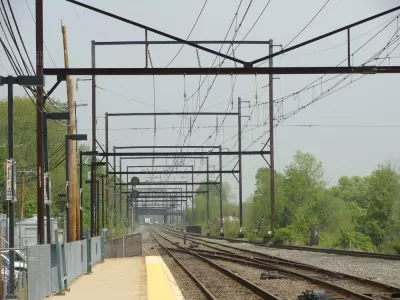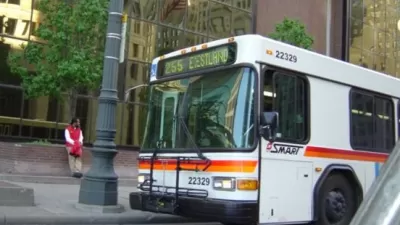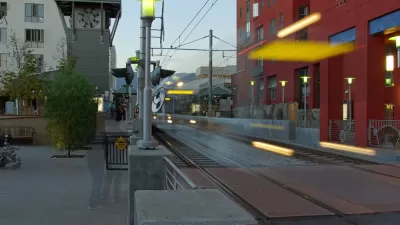With ridership revenue down, agencies seek to diversify their revenue stream by taking a more active role in developing agency-owned land.

With transit ridership down 79% in 2020 and a nationwide budget shortfall of close to $40 billion, writes Nate Berg for Fast Company, struggling public transit agencies are looking to revive their revenue through other means. Because many of them own land near their transit lines, some agencies are looking to the development of transit-agency-owned land as a potentially significant revenue source.
Until recently, most transit agencies used their land for surface parking, hoping ample parking near transit stations would draw more riders. But Jessie O'Malley Solis, transit-oriented development manager for the Santa Clara Valley Transportation Authority, says that in their area, it didn't work that way. "Just building seas of parking wasn’t going to generate ridership. You needed to generate connectivity along the system to make it valuable for riders." Now, as residents in Silicon Valley struggle to find housing in one of the country's least affordable markets, VTA is making plans to turn some of its land into "new transit-adjacent community hubs" and hopes its own development will have a ripple effect that encourages more private development near station areas. "O’Malley Solis says the development is always geared toward improving ridership and making more transit-oriented communities—whether it’s on land the agency owns or not."
While transit-oriented development isn't a silver bullet for increased ridership, "when done well, these projects can make an impact" on commuter mode share as well as increase the availability of affordable housing and the sustainability of transit agency budgets.
FULL STORY: Facing a $40 billion shortfall, U.S. transit agencies jump into real estate

Montreal Mall to Become 6,000 Housing Units
Place Versailles will be transformed into a mixed-use complex over the next 25 years.

Planetizen Federal Action Tracker
A weekly monitor of how Trump’s orders and actions are impacting planners and planning in America.

DARTSpace Platform Streamlines Dallas TOD Application Process
The Dallas transit agency hopes a shorter permitting timeline will boost transit-oriented development around rail stations.

Nine Ways to Use Curb Space That Aren’t Parking
California’s new daylighting law bans parking within 20 feet of crosswalks. How can cities best use this space?

ADUs for Sale? San Diego Could Legalize Backyard Condos
As one of 25 proposed amendments, San Diego may soon allow accessory dwelling units to be bought and sold as individual homes.

Dallas Ditches Parking Minimums in 14-1 Vote
The sweeping city council decision removes set parking requirements from developments downtown, near transit, small businesses and more.
Urban Design for Planners 1: Software Tools
This six-course series explores essential urban design concepts using open source software and equips planners with the tools they need to participate fully in the urban design process.
Planning for Universal Design
Learn the tools for implementing Universal Design in planning regulations.
City of Mt Shasta
City of Camden Redevelopment Agency
City of Astoria
Transportation Research & Education Center (TREC) at Portland State University
City of Camden Redevelopment Agency
Municipality of Princeton (NJ)
Regional Transportation Commission of Southern Nevada





























